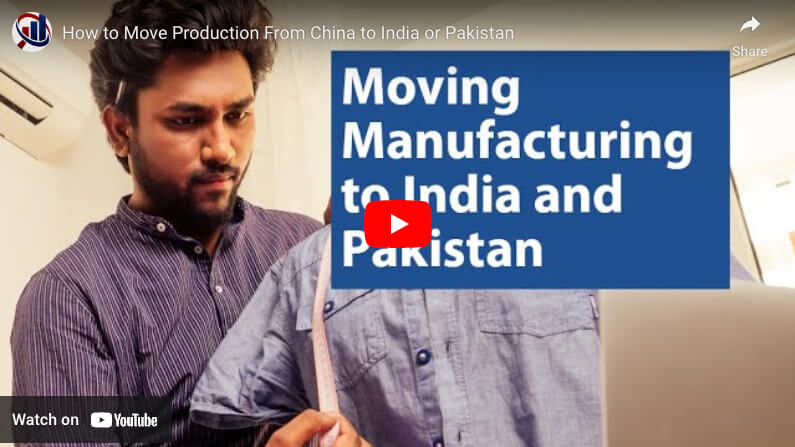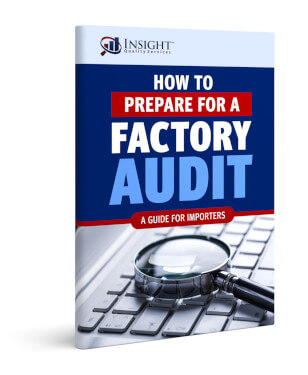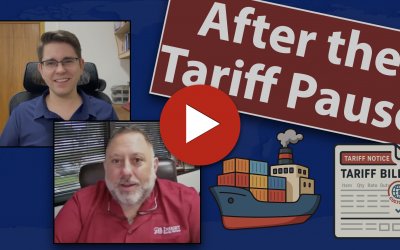How to Successfully Move Production to India or Pakistan
Many consumer product companies have been diversifying their manufacturing to various countries around the globe. Among those countries are India and Pakistan, which have seen a lot of interest from consumer goods importers wanting to make their products there.
Today, we’re discussing what’s driving this interest and the challenges that supply chain managers face as they move production from one place to another, as well as how they can deal with those challenges.
Table of Contents
Why are Importers Moving Production to India and Pakistan
Billy Miner: Andy, thank you for joining me today. Could you tell us, with many consumer goods companies looking at different destinations to manufacture their products, what’s really driving the interest in India and Pakistan? And what do you think makes these countries attractive?
Andy Church: Well, Billy, the number one reason for moving production from one supplier to another, whether within the same country or to a different one, is generally driven by cost. There can be quality implications or other reasons, but the underlying factor is that buyers are looking for a cheaper cost. In China, often referred to as the world’s factory, rising labor costs, a lower number of workers entering the workforce, and increased overall costs are significant challenges. US tariffs also heavily impact the total landed cost of goods being imported. So, cost is the main issue.
What Types of Products are Companies Making There?
Billy: Historically, there’s been a lot of apparel production in India and Pakistan, but what kind of products are companies manufacturing these days?
Andy: In India, it was historically apparel. I remember growing up, anything madras was produced and manufactured in India. Now, beyond apparel, we’re seeing a lot of bags—different quality levels, high-end, messenger bags, backpacks. There’s also a lot of stainless steel production for pets and households, and even commercial grade products. India is expanding in categories but remains heavy in apparel and metal consumer goods.
In Pakistan, as the fourth or fifth largest cotton producer in the world, there’s a strong focus on apparel. We see a lot of nonwoven and knitted apparel, some denim. The majority of what we’re doing in Pakistan is apparel-related. Stainless steel, apparel, and bags are good products to move out of China due to labor-intensive production, making costs significantly lower in these countries.
What are the Biggest Challenges of Moving Production?
Billy: Moving manufacturing from one factory to another comes with many challenges, especially when it’s a different country. What are some challenges that come with moving to a new factory in India or Pakistan, whether they’re quality-related or other kinds of challenges?
Andy: Anytime you move production from one supplier to another, there are hurdles. These can range from communication issues to technology transfer. One significant challenge in Pakistan, for instance, is their strong focus on cotton. We’ve encountered issues with stitching where factories weren’t as experienced in producing finished goods, only raw components. As orders increase, the quality of factories can diminish as new players enter the market.
Planning accordingly, considering worst-case scenarios, and ensuring the quality level is met before ramping up production are essential steps. The biggest challenges include communication, technology transfer, proper timeline planning, and patience. It’s not an easy process, but with the proper mindset, timeline, and communication, the pain can be minimized.
Moving Production is Challenging. How do You Make it Go Smoothly?
Billy: You’ve alluded to several types of challenges. Could you tell us more about how to overcome these challenges? What practical steps can supply chain managers take to ensure the process of shifting production is as smooth as possible, especially in maintaining quality?
Andy: One of the first steps is evaluating your quality and processes at your existing supplier. This is the time to make improvements in internal processes as you migrate to a new supplier. We encourage our buyers to have tech packs, which include diagrams, measurements, materials, and other details. Updates should be properly documented, and a revision history should exist.
Ensure your new supplier understands all your quality requirements, including product inspections and annual factory audits. If they don’t know your expectations, they can’t meet them. Conducting thorough audits to ensure the factory is capable of producing your products and meets basic requirements is crucial.
What Role do Audits Play in a Successful Move?
Billy: Audits seem to be a vital part of transitioning production. Could you explain the importance of factory audits and how that process works?
Andy: Due diligence is essential to ensure your supplier can meet your needs. Audits verify if the factory is licensed for export, capable of producing your products, and has the necessary capacity. It’s also important to check if they pass social accountability audits, ensuring they provide safe and healthy work environments.
One Crucial Piece of Advice for Your Move to India or Pakistan
Billy: Finally, what is your biggest piece of advice for supply chain managers considering moving production to India or Pakistan?
Andy: Be patient. Document your processes, develop a timeline, and do due diligence, but patience is key.
Billy: Thank you, Andy. For those looking at new suppliers in India or Pakistan, we have a free guide on how to prepare for a factory audit. It provides tips on conducting audits and what to include in your audit checklist.
If you need help auditing your potential or existing factory, reach out to us. We have auditors in India and Pakistan who can conduct assessments on your behalf. Thank you for joining me today, Andy, and to everyone else, have a great day.
Free Guide
How to Prepare for a Factory Audit
A factory audit helps you assess a supplier's systems, capacity, workplace environment, or capabilities to ensure they meet your requirements as a buyer.
But which type of audit should you conduct, and which points should you cover on your checklist? In this free guide, you'll learn how to run an effective supplier assessment.






0 Comments